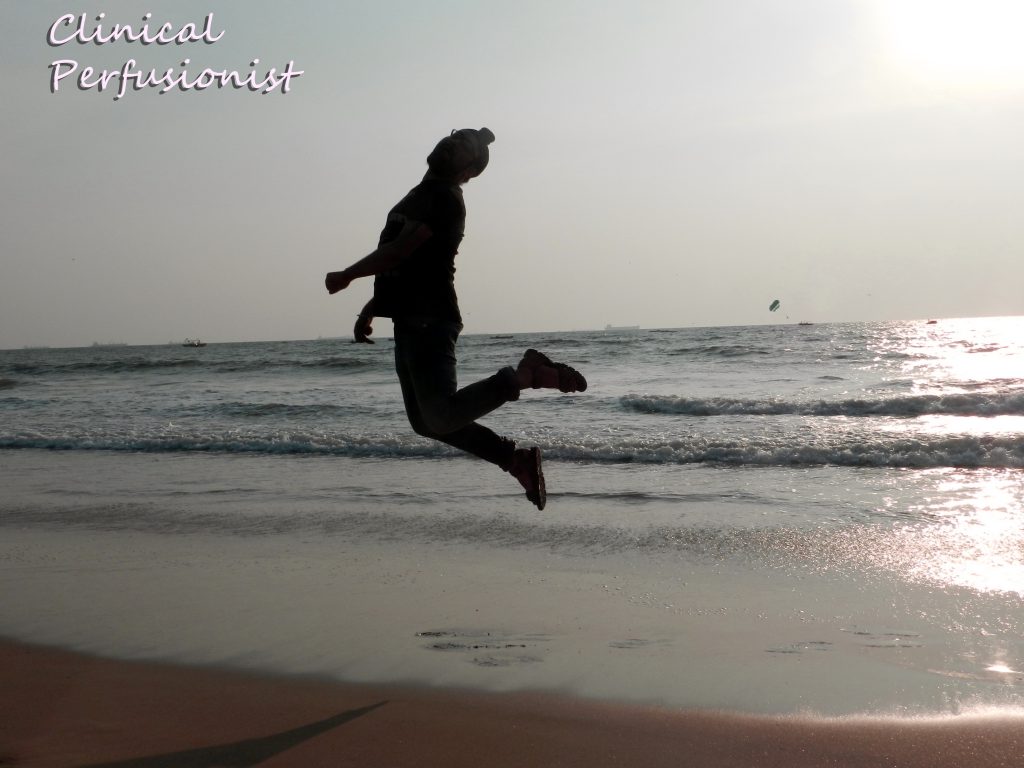Perfusion India: The Story of Bijender Singh Bali [2]

To Save Lives.. You must Love LIFE… (click image)
An Interview With a Perfusionist from India…
Thank you Bij for allowing this interview to happen. I appreciate the effort you have taken to respond with such thoughtful and enlightening answers.
So let us begin.
Q 1:
Describe your life when you first engaged medicine, what made you decide to go into perfusion, what were the circumstances for getting into a perfusion program?
It was year 2001 when I passed my high school(10+2) and was looking forward to join a medical school ,as I wanted to pursue my career as a doctor.
During my entry level examination I got lower ranks and was eligible to take only paramedical courses. It was then that I came to know of perfusion technology being a challenging job.
I joined my Bachelors in perfusion technology in October 2001 at J.N.Medical college, Belgaum affiliated to Rajiv Gandhi University of health Sciences, Banglore.
The duration of my course was 3 1/2 years.
Q 2:
Tell me about the places you have worked, your equipment that you use, how you conserve resources, how patients are selected (ability to pay- is it an issue)
After finishing my perfusion programme in 2005, I joined Narayana Hrudayala Institute Of Cardiac Sciences, Banglore.
It is one of the world’s largest pediatric heart hospitals. It is the brainchild of the renowned cardiac surgeon, Dr. Devi Shetty.
Narayana Hrudayalaya also receives patients from outside India, and it has created a record of performing nearly 15,000 surgeries on patients from 25 foreign countries. It is also a renowned centre for telemedicine and it offers this service free of cost.
Despite helping so many poor patients, it is known for being so efficient, that it has a higher profit margin (7.7% after tax) than most American Private Hospitals (6.9%).
Narayana Hrudayala has 15 cardiac operation theaters, where almost 30 -35 cardiac surgeries are performed per day. I worked here for 2 years and took part in various challenging operations and worked upon various types of perfusion related equipments and gadgets.
In mid July 2007 I got opportunity to work at
Fortis Escorts Heart Institute and Research centre in the department of pediatric perfusion and right now I am heading the department .
Bij discusses some aspects of Fortis Escorts Heart Institute & Research Centre
(Click Image to View Fortis…)
- Multistage palliation for HLHS (hypo plastic left heart syndrome) has recently been started with a high success rate for the challenging stage I Norwood procedure. Stage 1 repair of Hypoplastic left Heart syndrome a uniformly lethal anomaly for which the Sano modification has been successfully incorporated.
- Anatomical repair of Congenitally Corrected Transposition of the Great arteries. CCTGA is a rare anomaly is which the Right ventricle is the systemic ventricle and the Tricuspid valve the systemic AV valve. This lesion results in time linked systemic ventricular failure. This can be prevented by timely execution of the double switch operation. It was first performed the world over in 1993, it corrects the atrioventricular & ventriculo arterial discordance there by normalizing the connections, thus bringing the left ventricle to bear the systemic after load and thereby preventing fatal heart failure. The surgeons at Fortis Escorts Heart Institute have one of the World’s largest experiences with this operations which is performed only in a very limited number of centers the world over. Arterial Switch operation (ASO) is the procedure of choice for TGA. While neonatal presentation is an accepted indication for the ASO, we have been performing this operation ever in late presenters. Up to 5month of age a primary arterial switch is performed with postoperative LV support with extra corporeal membrane oxygenation (ECMO), on which the LV is prepared. Beyond this age the Senning operation or the 2 stage ASO is done.
- VSD, PA, MAPCAS is a complex lesion in which all or parts of the lung drive blood supply directly from the aorta. Fortis Escorts Heart Institute offers primary one stage unifocalization of the MAPCAS with VSD closure & RV to PA conduit in suitable case while, in those cases not suitable for one stage correction, a palliative systemic to pulmonary artery shunt with collateral unifocalization is performed.
- Ross operation for aortic valve disease is being performed routinely. Here, instead of a prosthetic heart valve, the patients own pulmonary valve is transferred to the aortic position while a Valved conduit is placed in the pulmonary position. Advantages of the Ross operation are zero need for anti coagulation with all its attendant draw backs & preservation growth of potential of the aortic valve in children.
- In addition over the last 1 ½ years Fortis Escorts Heart Institute has started a Pediatric ECMO programme where in any patient who suffers a sudden cardiac arrest that is refectory to resuscitation is put an extra corporal membrane oxygenation (ECMO) & thereby has a 70% chance of salvage in our experience. Thus patients, who have had a satisfactory surgical heart repair but for some reason sustained a refectory cardiac arrest, still have a good chance of survival & successful discharge from hospital as normal & intact children.





